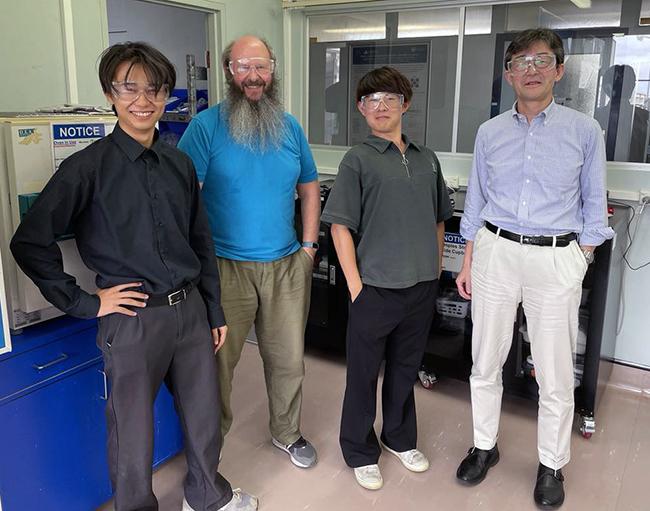The explosion that occurred at Fukushima was due to the sudden release of hydrogen from the zircalloy cladding that surrounded nuclear fuel to prevent it from interacting with water.
The Nuclear Technologies group at ANSTO has taken up the challenge to develop a coating for the cladding used in nuclear reactors to prevent it from taking up hydrogen and releasing it if temperatures get too high and repair itself if damaged.
ANSTO has been working with the Nagaoka University of Technology, Japan (NUT) for over two decades on related research.
They have teamed up with a consortium in Japan to develop ceramics that will heal themselves even in the harsh environments of a nuclear reactor which include damage due to radiation and extreme temperatures.
With an extensive background in radiation damage characterisation of ceramics and metals, the group is determining if radiation damage enhances the self-healing properties due to the migration of the doped elements in the ceramic matrix.
Doping refers to the controlled introduction of elements into a material to manipulate its properties.
The technology developed would ensure the nuclear industry can operate with a higher degree of safety but could also be applied to current Australian industries, such as evolving energy storage systems storing solar energy in molten salts.
The existing and emerging relationships will ensure Australia's continued collaboration in science and technology with Japan and provide an opportunity for Australia to support Japanese and international nuclear technology and advanced manufacturing industries in the future.
"This project builds on ANSTO's expertise in characterising radiation in materials and materials degradation caused by exposure to extreme environments," said Prof Gordon Thorogood.
"We have demonstrated world-leading capability in this area of research."
Multiple capabilities across ANSTO including X-ray and neutron techniques, ion beam irradiation and post-irradiation characterisation methods are applied.
Collaborators include University of Wollongong, Nagaoka University of Technology, the National Institute of Technology Fukushima College, the Japan Atomic Energy Agency, including the Collaborative Laboratories for Advanced Decommissioning Science (CLADS).
Contributors at ANSTO included Prof Thorogood, Prof Mihail Ionescu, Dr Alan Xu, Dr Dhriti Bhattacharyya, Dr Tao Wei, Dr Daniel Oldfield, and Joel Davis.
This project received grant funding from the Australian Government.
ANSTO has recently hosted two students from the Nagaoka University of Technology in Japan, Ryota Kobayashi and Asumu Horikawa, who have been working on the self-healing ceramics project under the supervision of Prof Gordon Thorogood.

The university has a major research program and long-standing collaboration with ANSTO nuclear fuel researchers led by Prof Makoto Nanko in the High-Temperature Materials laboratory.
"The really interesting thing is that because you can have enhanced oxidation with radiation damage, you could use this aspect to heal the damage," explained Prof Thorogood.
Prof Nanko's group has been investigating aluminium doped with nickel for current systems, and yttrium silicate doped with silicon carbide for higher-temperature systems.
In January ANSTO also welcomed Prof Masatoshi Takeda Dean of Undergraduate & Graduate School of Engineering and Vice President, Nagaoka University of Technology, who is an expert in ceramics.
Prof Takeda spoke highly of the exchange program that enables university students to spend time gaining valuable hands-on experience at ANSTO using irradiation facilities, neutron and synchrotron instruments and other methods to improve ceramics for nuclear applications.
"It is very valuable for our students to have the opportunity to undertake these internships internationally," said Prof Takeda.
The collaboration between the University and ANSTO goes back to the late 1990s.






